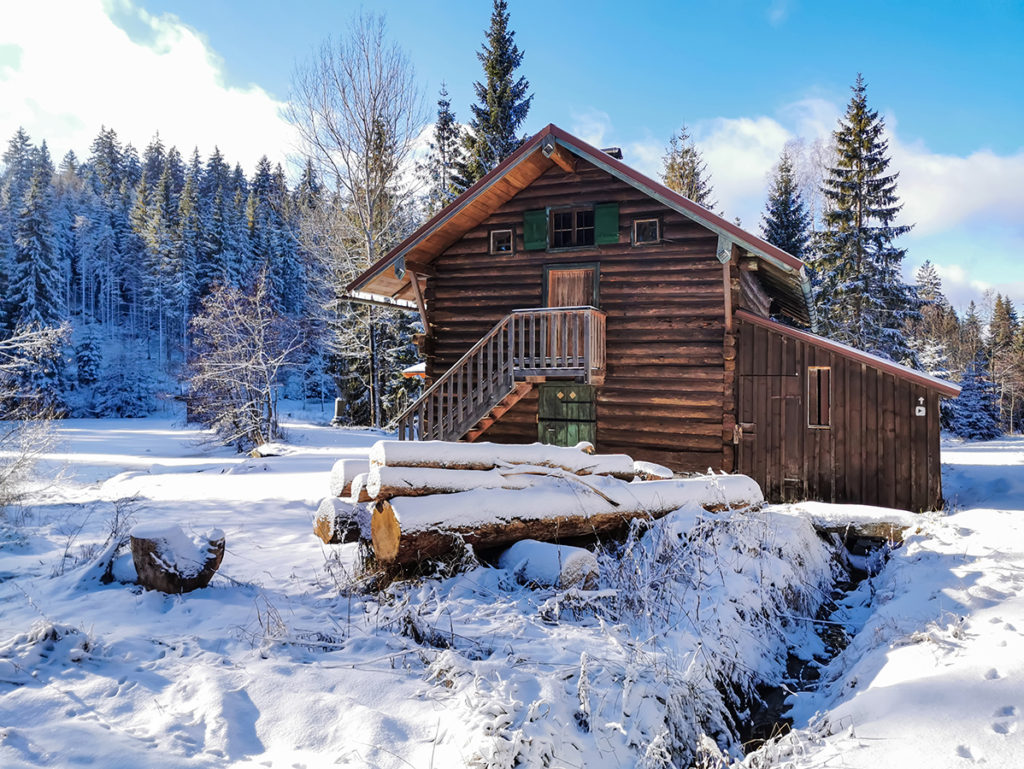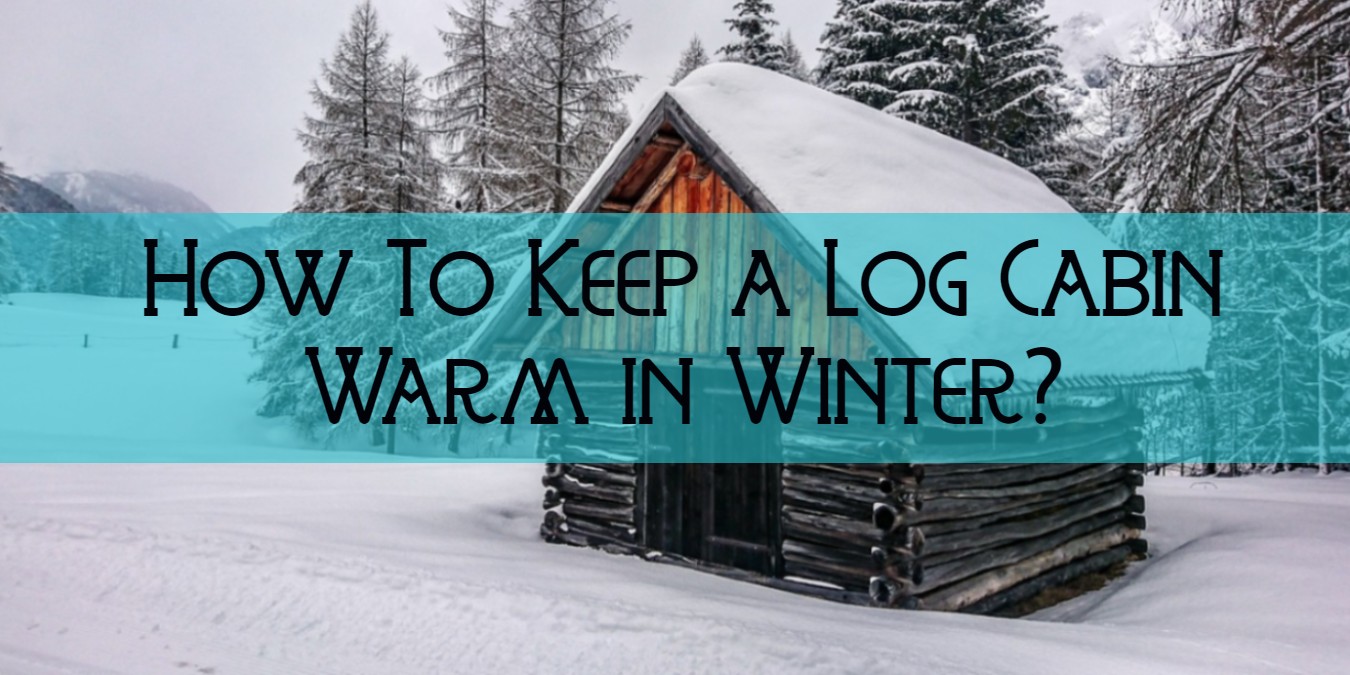While the logs of a log home are thick and provide excellent protection from the cold winds and elements, they are not enough to keep you warm during the winter months. So, understanding how to keep a log cabin warm in winter will save you from the unexpected. Heating a log cabin is not too different compared to a standard home. However, you will need to do a few things to ensure that you and everyone else inside stays warm.
Whether you are building or considering the purchase of a log cabin, one important aspect is how the cabin faces in relationship to the sun. In the northern hemisphere, it is advisable that your cabin faces south or slightly southwest for maximum solar impact. The same rule is true for any home when possible. By facing to the south, you ensure that the sun will face the largest section of wall in the front of the cabin during the cold winter months.
But there is more to how to keep a log cabin warm in winter. What follows are a few tips that will help you keep the cabin warm and cozy.
Lumber Type
The type of wood that the cabin is made from has a direct impact on its longevity and insulating qualities. When selecting the lumber to be used to create the log cabin, you will need to know the following.
- Appearance
- Availability
- Cost
- Decay Resistance
- Finish
- R- Value
You are probably familiar with the top five types listed, but do you know what R-Value means? R-Value is a unit of measurement which determines the thermal mass or insulating properties of the lumber itself. The higher the R-Value, the better insulator it makes. This means that it will hold heat better compared to lumber with a lesser R-Value. The insulating qualities are determined by the thickness of the log and the type of lumber that is selected.
If you are purchasing a log cabin, it is important to note the R-Value of the lumber, so you can take the appropriate steps in adding insulating material if needed.

Insulation
No matter how thick the logs may be, you will need to add insulation to the log cabin if you want to keep warm. The insulation should be under the flooring to help trap the heat inside and prevent the cooler air from getting out in the summer. Understanding how to keep a log cabin warm in winter means focusing on the roof and flooring. These areas are mostly responsible for keeping the heat inside.
This is because if the R-Value of the logs is good, most of the heat will either escape upwards or the cold will come in through the flooring. It is essential that you install a moisture membrane under the cabin to maintain air flow. Moreover, it is also to ensure that you can properly insulate the flooring itself. It is important because a lack of air flow may mean a build-up of moisture, which presents new issues for your log cabin.
So, make sure that your attic has plenty of insulation, along with under the floors, to keep your log cabin nice and cozy in the cold.
Also Read: What Temperature Should I Set My Thermostat in Winter?
Ceilings & Windows
The design of the ceiling and windows will also play a vital role in how to keep a log cabin warm in winter. The higher the ceiling, the more it will take to warm the room. It is why log cabins with a tongue and groove flat ceilings are far more energy efficient, even if they are not as pleasing to the eye.
For your windows, be sure that they are double glazed. Double glazing provides better insulating qualities and will trap more of the heat inside. You will see the savings in your energy bill when you switch from single to double glazed windows.
Seal Leaks
Over time, logs tend to swell and compress as temperature and moisture levels change. While the shifting itself is minimal, it can result in small cracks that let in the air from the outside. You will need to inspect your log cabin from time to time to locate such leaks.
They can be addressed with the proper sealant such as expanding foam. This type of foam will fill up the opening and help prevent future air leaks in that location. You will want to pay attention to entrances, corners, and areas around the windows where it is most likely to develop an air leak.

Moisture Control
Consider that trees will absorb a large amount of water over their lifetime. And just because they are now part of your log cabin does not mean the process has stopped. Even a properly dried log can still absorb a considerable amount of water, which can lead to issues such a rot, pest and air infiltration. It is why the logs need to be dried and treated with stain to lower the chances of moisture absorption.
Additional steps such as caulking to seal cracks and looking for harmful organisms such as mold or mildew is important as they indicate an uptick in the moisture levels. If you should spot any mold or mildew, remove it immediately. You will also need to locate if a specific source is responsible, such as a leaky pipe or water heater.
One simple way to keep the moisture under control is to identify areas in the cabin that have a higher humidity value. These areas include the kitchen, bathroom, and around the water heater. Once identified, you can lower the moisture amount in the air through circulation. A few small fans will help keep the interior dry and prevent too much moisture from building up.
Wrapping up
Understanding how to keep a log cabin warm in winter starts by the orientation of the home, the type of lumber used in its construction, the insulation added, how the ceiling and windows are designed, if the leaks have been sealed, and if you can control the moisture levels. Following these steps will help ensure maximum energy efficiency, which results in a warmer cabin during the cold winter months.
Also Read: Where Do Mosquitoes Go in the Winter?

